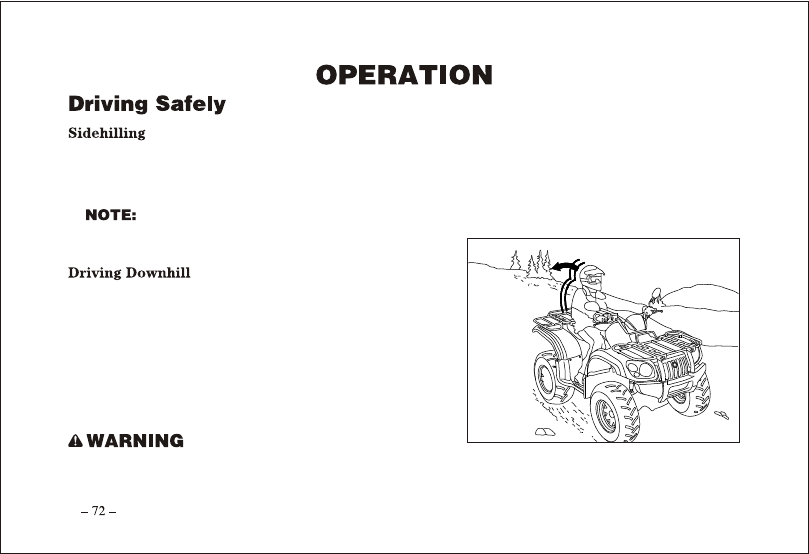CFMoto ATV CF500-A 4x4. Service Manual - part 5

2. Lean into the hill, transferring your upper body weight toward the hill while keeping your feet on the
footrests.
3. Steer slightly into the hill to maintain vehicle directions.
If the vehicle begins to tip, quickly turn the front wheel downhill, if possible, or dismount on the
uphill side immediately!
Whenever descending a hill, follow these precautions:
1. Proceed directly downhill.
2. Shift your weight to the rear of the vehicle.
3. Slow down.
4. Apply the brakes slightly to aid in slowing.
Familiarize yourself with operation of the auxiliary rear brake
lever.
Excessive speed can cause loss of control and lead to serious injury or death. Always operate slowly when
traveling downhill.